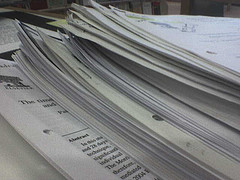 Pulling out a piece of paper to write on is such a common activity we do it almost without thought. Yet it takes a massive amount of work to transform raw materials into usable paper – not to mention the considerable muscle of Falk gear boxes and other heavy-duty machinery. At Mar-Dustrial, we regularly supply Falk gear boxes and other components to paper manufacturers such as Boise Inc., which operates across the United States and in several countries.
Pulling out a piece of paper to write on is such a common activity we do it almost without thought. Yet it takes a massive amount of work to transform raw materials into usable paper – not to mention the considerable muscle of Falk gear boxes and other heavy-duty machinery. At Mar-Dustrial, we regularly supply Falk gear boxes and other components to paper manufacturers such as Boise Inc., which operates across the United States and in several countries.
Within a paper mill, gear reducers play an important role in pumps, conveyors, mixer drives and paper machine drives. Parallel, concentric and shaft mount Falk gear boxes are all commonly found in paper-related applications.
How Paper is Made
The first step in making paper is to prepare the pulp, which is made of plant fibers – usually wood, cotton or flax. The material is broken down, often through a chemical pulping process, then refined and blended to create a uniform consistency. The blending takes place within large industrial power mixers; a Falk gear box is typically employed to convert the energy from the mixer’s power source into the torque necessary to churn vast amounts of the pulpy mixture.
Once the pulp is ready, it is fed into a paper machine, which forms it into sheets, presses out the water, then dries and smooths the finished paper. The paper machine will also typically use a Falk gear box to regulate the speed and power of its operations.
A Brief History of Paper Making
Before there were paper machines (or the Falk gear boxes that drive them), paper was considered a precious commodity simply because the process to make it was so laborious. Ancient Egyptians are credited with creating the earliest form of paper, which was made of the sliced flower stems of the papyrus plant, around 2400 B.C. Later, in 105 A.D., a process for soaking, beating and sieving plant fibers to make paper began spreading across China.
From there, paper making remained much the same until the industrial revolution, when mass production became available. Then, in 1838, the first paper made of wood pulp was developed and used as newsprint. It wasn’t long before corrugated cardboard, paper plates and other paper-based products emerged.
Paper plays a critical role in modern living – we all encounter these products on a daily basis and rely on them to perform any number of essential tasks. We’re pleased to contribute to this important industry through partners such as Boise Inc.
[ Photo by: jbj, via CC Lincense ]
Posted under Products/Services on Wednesday, March 13th, 2013
